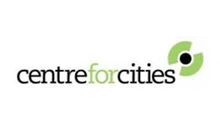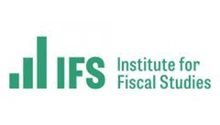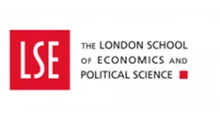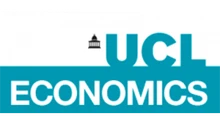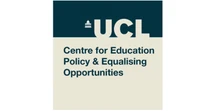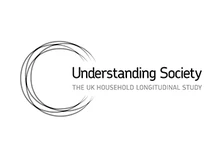Council tax is unpopular, unfair and overdue for reform. An alternative would be to fund statutory services through central government, introduce a modest local service charge, and absorb stamp duty and capital gains tax on housing into a single recurrent residential land and property ownership fee.
In the run-up to the autumn budget, residential property tax is a hot topic. In Britain, council tax – which nearly half of the population thinks is unfair – sits at the heart of the debate. Set to raise as much as £50 billion in 2025/26 (exceeding the combined revenue from stamp duty and residential capital gains tax), most find this charge less appealing even than income tax, value-added tax (VAT), fuel duty or inheritance tax.
Following this year’s overall 5% uplift, a typical band D household in England pays around 4% of gross household income to their local authority. But this is not the problem. The problem is that council tax is a hybrid charge (part service charge, part property tax) with mixed objectives, something that is rarely a good idea.
As a service charge, council tax is too stretched to compensate for a crisis in local government funding. As a tax, it is regressive (those with least pay proportionally more), unjust and prone to piecemeal fixes and freezes that leave both the housing emergency and a mix of other residential property taxes untouched.
A solution? Fund statutory services through central government, introduce a modest local service charge, and finance the shift by absorbing stamp duty and capital gains tax into a single recurrent residential land and property ownership fee.
A hybrid charge
As a service charge, council tax is designed to help local authorities fund their commitments to over 800 public and community services. It is now the single largest source of local government funding, rising from 36% to 56% of the total in the 15 years to 2025/26. It has become the only real lever that local authorities have to balance their budgets, as central government funding ebbs away.
When council tax was introduced in 1993, it was charged according to which of eight open market price bands a property fell into. That is, although charged to home occupiers as distinct from property owners, with only a tiny proportion of properties assigned to the top bands, it was loosely based on property values.
For many years, however, empty and second homes attracted a discount – initially up to 50% or the entire service charge component – on the grounds that they placed less demand on local authority services than primary homes with two or more adults present.
Although those discounts have largely been phased out, a 25% reduction (half the service charge) still applies wherever only one resident is eligible for council tax. This extends to one-third of dwellings, at a ‘cost’ of over £2.5 billion a year.
In this context, it may be unsurprising that council tax is attracting the ire of those living on ‘unadopted’ private estates, where access roads are not publicly maintained and residents pay fees to management companies for drainage, street lighting and the maintenance of communal areas. Apparently, 80% of new homes built by the 11 largest developers in 2021 were unadopted when sold.
Perhaps it is unfair that homebuyers – or indeed those who pay site charges as well as council tax to live primarily in a static caravan – should not attract a discount. Perhaps what seems right for a service charge is simply inappropriate for a property tax.
Why is council tax regressive?
Income tax – the largest single source of tax revenue – is broadly progressive (the average tax rate rises as the taxable amount increases). It is true that top marginal UK income tax rates have fallen dramatically since the 1970s (from 83% in 1978 to 45% in 2025), but there is still a redistributive element: the gap between the top 10% and bottom 50% income share is reduced by nearly ten percentage points after tax.
In contrast, going into the 2020s, the share of income needed to pay council tax was three times higher for the poorest fifth of households (who were paying nearly 5%) than for the richest fifth (who paid just 1.5%).
To the extent that it is a direct tax, council tax is unique in Britain in being regressive to incomes. Astonishingly, it is designed to be regressive to property values.
In 1991, when the structure of council tax was fixed, properties in the top band were worth, on average, eight times more than those in the bottom band. Yet they were charged only three times as much. That was before the extraordinary post-1980s house price cycle got underway.
Since then, property prices have risen dramatically, if unevenly, and housing wealth inequality has widened. Wales revalued in 2003, and Scotland, which may yet follow suit, changed the multiplier for top bands in 2017. Nevertheless, council tax across Britain has become detached from the distribution of any reliable, up-to-date measure of property wealth or rental income, and it is increasingly protective to those towards the top of the range
The fact that geography matters so much for house price appreciation also makes council tax shockingly regressive by region. Those living in London and the South East pay far less – as much as an order of magnitude less – as a proportion of the value of their property than those in the North and parts of the Midlands.
Yet it is precisely those living where property prices have lagged who are vulnerable to council tax increases, and to spending cuts from cash-strapped councils with lower value tax bases. For example, Bradford, one of Britain’s poorest local authorities, saw the highest council tax increases of all this year: 9.3%.
In all, council tax is – both by accident and design – uniquely regressive across several dimensions, systematically advantaging those who have most. This is ironic as when it was introduced as something fairer than the poll tax, it was expected to benefit the poor.
A progressive tax?
Undeterred, in the context of the present housing emergency, policy-makers have started to tinker with council tax as if it were a rational progressive residential property tax.
Following the reduction of council tax rebates – and after a round of post-2015/16 hikes had failed to balance a decline in the real value of central government grants – the 'service charge' reduction on vacant and, more recently, second homes has been replaced with a premium (the single person discount is unaffected).
The new premiums are discretionary rather than mandatory (capped at 100% in England and Scotland, and 200% in Wales), but they have now been applied by three in every four local authorities. In principle, this brings council tax in line with the main property transactions taxes. (Since 2016, stamp duty has charged a premium on properties other than a primary residence, while capital gains tax has only ever been charged on second or investment properties.)
Although a council tax premium is one way of progressively charging more to those who, by one measure at least, have the most property, the main aim is to bring under-occupied homes back into full-time use. If successful, this might free up over a million properties, or around two-thirds of the ‘new homes’ promised across the lifetime of the present government. Whether they would be in private rental or owner-occupation is a moot point.
Whether the premium does in fact precipitate a wave of decumulation also remains to be seen. There are myriad caveats, although if it does succeed, the move should ease system-wide pressures, and it could be game-changing in places where the scramble for short lets is crowding out the rest of the market. If there were incentives for second homeowners to sell to non-profits or social landlords, it could also ease housing affordability stress.
That said, it is not clear how many second (or indeed empty) properties are decent, affordable and energy efficient; or how far, geographically, they match local needs. For example, although The Guardian is reporting a 100-year wait for family housing in the social sector in some local authority areas, these are not the local authorities with the most second homes. In fact, among the ten local authorities with the longest waiting lists for family housing, only one (Camden) has an above average proportion of second homes – most have between 0% and 1%.
If the new surcharges do not result in a widespread sell-off, they might still raise extra funds to support local services. One back-of-an-envelope calculation suggests that if all second and empty homes are charged double (or triple in Wales), and none become primary residences, an uplift of as much as £2 billion could be returned to local authorities – a sizeable increase of up to 4% on the total council tax take.
On the other hand, even if local authorities have a loophole-proof way of identifying and charging for all second homes, this kind of premium attaches to only a fraction of the housing stock.
If it is a penalty on under-occupation, applying it only to second and empty homes seems inconsistent with retaining a discount for singles. More broadly, nearly two-thirds of owner-occupiers under-occupy housing for one reason or another, benefitting from the space, carbon consumption and tax-free capital gain that spare rooms and large floor areas attract. Yet only council tenants are ‘taxed’ on spare bedrooms (while private renters face caps on the number of rooms for which they can claim benefits).
In short, to the extent that council tax is being positioned as a progressive residential property tax (the more you have, the higher the share you pay) in its present form, it is partial and poorly targeted. In addition and crucially, it diverts attention from a fundamentally regressive underlying regime.
Time for change?
Few dispute the need to reform residential property taxes generally, and council tax (the largest and least satisfactory component) in particular. The challenge is that since the poll tax debacle, the very idea has become a political hot potato that no party wants to catch.
Yet with housing as a key driver of economic inequality, a recent round of government kite-flying may signal the winds of change. As well as growing interest in a more general wealth tax, and myriad incremental council tax reforms, national insurance on rental income, capital gains on owner-occupation, abolition of stamp duty, and a new tax on high value residential sales are all in the mix.
If the time has come to widen the housing tax base, a more joined-up approach may appeal. What would that entail?
Split out the service charge
Arguably, the more objectives that a tax or subsidy instrument seeks to address, the less successful it is likely to be. Council tax is a hybrid, and stretching it to the limit has exposed the long-term underfunding of local government.
This underfunding is finally under review,and there are encouraging signals about the reallocation of central funds across councils, based on measures of service need. The latest report of the Housing, Communities and Local Government Committee on the funding and sustainability of local government recommends allowing councils to set their own local taxes, while assigning stronger responsibility to central government to fund the services that it requires local authorities to deliver.
These proposals (not the first) to create a more transparent local service charge – effectively split so as to distinguish spending that is centrally mandated from that which is discretionary – will take into account funds raised through council tax, and hopefully compensate for the disparities that they drive. But despite being eased into place by a £600 million ‘recovery grant’, the proposals carry no commitment to grasp the nettle of council tax reform.
This feels like a missed opportunity.Restoring central funding for mandated local expenditures will need a new flow of funds from mainstream taxation. This is what will enable a lower local service charge for locally determined essentials. Specifying the basis and magnitude of this local charge will itself be challenging. But it would create space for a reformed residential property tax base, which is one of few realistic ways of raising new revenue.
A national, rather than local, property tax (alongside a locally determined service charge) would free the 'fair funding' formula from complex council tax legacy adjustments, and focus attention on how best to redistribute property wealth to meet local needs. It also raises a further key question.
What future for residential property taxation?
With or without a crisis in local government funding, reforms to the taxation of residential property are long overdue. Council tax is not working effectively, but other elements of the present regime – stamp duty and capital gains tax – are also widely critiqued.
The former is generally viewed as a brake on labour mobility, which also impedes downsizing and adds inefficiencies to housing transactions. The latter is partial: it applies only to investment properties sold while the owner is alive, leaving eye-watering untaxed windfall gains on owner-occupation untouched and uncapped, contrary to OECD recommendations.
There are several 'reform packages' in the mix, each tackling one or more of the above problems. Gathering key ideas together – and drawing from a generic ‘thought-experiment’ introduced elsewhere – we suggest replacing all of these charges with a single annual residential property ownership fee (with service charges split out as above, and rental income taxed separately). The proposal has the following core features.
It is a recurrent charge against fixed assets (land/property), in line with the gold standard for residential property taxation. It is also consistent with the recommendations of the Institute for Fiscal Studies (IFS),who argue that a simple annual tax, proportional to property values, offers the best hope of narrowing wealth inequalities.
Improved data and technical resources make it feasible to impute prices and revalue annually, so the time seems right to make this shift, building in other safeguards (such as deferral) to support those who are income-poor, as the system beds in.
Land is the preferred tax base, especially in Britain, where a distinctively high proportion of residential property prices (about 70%) accrue from it. The economic rationale is strong (not least to ease inflationary pressures), though others make the case for a split rate – a separate charge for the land and property components – together with discounts to promote energy efficiency. Overall, simplicity of design and administration is paramount.
Charged to property owners, the new fee would be priced to absorb all other property taxes, including council tax (though not the local service charge). An overall uplift in the flow of funds would be secured by proportionally charging owner-occupation across the whole range of values, and by applying a premium to the land value of properties held for profit.
Applying certification/licensing measures, to manage the number of properties eligible for the higher tier charge, would enable governments to constrain the profits extracted by a restructuring privately rented sector, and limit its growth in favour of not-for-profit alternatives.
To increase buy-in to any shift, we suggest at least partially earmarking (‘hypothecating’) the revenue, to create a housing infrastructure fund (for maintenance, repair and decarbonisation) perhaps under the auspices of the new housing bank.
Building on ideas developed around other ‘merit goods’ (those that benefit society as a whole), and analogous to debates around carbon consumption, we also anticipate distributing a housing dividend to residents (as distinct from property owners) that could help with housing costs. This could also widen the appeal of a levy explicitly designed to meet the unfunded social costs of modern housing systems.
Council tax is a charge that few are willing to defend, yet none seem prepared to replace. Other property taxes are equally beset by inertia. That is because the practical and political challenges seem insurmountable.
There certainly is no quick fix. Yet in the face of immense pressure on the public purse, a crisis of local government funding and a range of workable alternatives, perhaps, finally, it is time for a change.
Where can I find out more?
- Revaluation and reform: bringing English council tax into the 21st century: A report from the IFS.
- A fairer property tax: A report for Onward by Tim Leunig.
- Why we need a green land value tax and how to design it: Proposal by John Muellbauer.
- Council tax: the case for change: Short intervention by Mark Stephens.
- The edges of owner-occupation versus rentier capitalism: New study by Susan J Smith and Gavin Wood.
Who are the experts on this question?
- David Phillips
- Stuart Adam
- Paul Cheshire
- Ken Gibb
- Tim Leunig
- John Muellbauer
- Josh Ryan-Collins
- Mark Stephens
- Susan Smith
- Christine Whitehead
- Gavin Wood




